Owning a dog is a huge responsibility. The life of your furry canine friend is in your hands. So it is your job to ensure that your dog is happy, safe and healthy. While we would never hurt our dogs intentionally, there are some things we do that pose danger to our friends. Sometimes we do these things because we lack the information, while other times it’s because we slack on specific safe practices and needs. Are you guilty of any of these actions?
1. Unsafe Car Rides
We all have to transport our puppies once in a while. We might be taking them shopping, to see a vet or merely tagging them along for a ride. Most dogs jiggle with joy as they enter the vehicle. Riding in the car with your pup is not just an opportunity for you to spend time with her, but it is also a treat for them. Unfortunately, we fail to make these rides safe for them.
When you hop into the car, the first step is to close the window. It should be high enough such that your pet cannot jump out of it. It’s okay for your pup to stick out his nose. After all, allowing him to enjoy the scents floating in the wind helps him enhance his sense of smell.
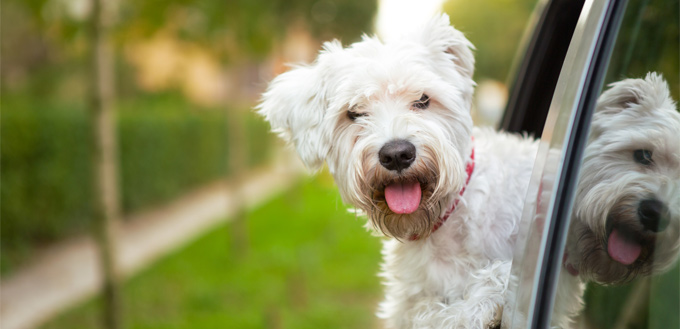
Most dogs like sitting in the front car seat areas because they want to be close to their favorite human, and they can stick their noses out. As your dog enjoys the scents, they might catch a smell that will make them want to jump out of the window. So the second step is to belt your furry friend. An unrestrained pup in a moving pet is always potential for danger. Imagine what would occur if you had to make an abrupt stop; the dog could quickly be thrown out of the windshield.
Now that your pup is sitting in the front seat with you, it’s important to keep your hands off him. The second you are tempted to pat him is enough to cause a fatal accident. This is because you will look away from the road. Ensuring that you harness your pet will also prevent them from getting on your laps; an action that could easily distract your driving.
Find out more about Dog Harnesses.
2. Not Using the Right Equipment
Having the proper equipment to keep your pup safe is not that straightforward. Collars are breed specific while leashes are rated for specific weights. For instance, a Pit Bull needs to have a different collar from a Greyhound because of the shape and size of their heads. However, leashes and collars are not the only equipment a dog owner should be concerned about.
If you live in a state that is often too hot or too cold, you should invest in the appropriate footwear for your dog. Ice, salt for melting snow and hot sidewalks can damage the paws of your canine buddy.
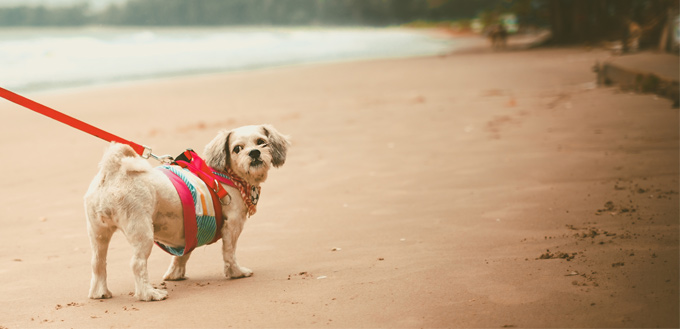
Pet owners must also be wary of the food bowls they use for their dogs. Plastic bowls might break and leach chemicals into the water and food. If you own a Retriever or a Labrador, you probably bought a dog bowl that will prevent them from eating too fast. Such containers have obstructions that might harm your pet. All these issues should be of top concern when purchasing equipment for your pet. Remember to do your research before buying.
3. Walking Without a Leash
Horrific stories of how dogs got into danger because they didn’t have a leash are common. One would ask, “Wasn’t the dog trained? Didn’t the dog understand come? What happened?” Even the best-trained dogs are victims of the hazards of walking without a leash.
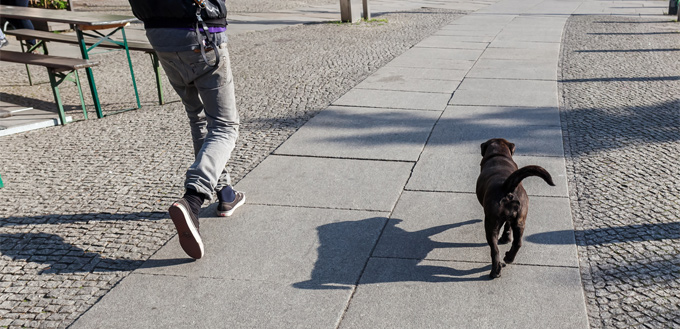
You cannot tell when to expect something out of the ordinary, such as when your dog bolts in the middle of traffic. You don’t know when your well-trained dog will decide to trash on the ground or lick another dog’s waste. There are several dangers out there like harmful parasites and choking hazards. The best way to keep your canine buddy safe is to put a leash on him so that you can pull him away from potential risks. There is a plethora of dog leashes that you can choose from: retractable dog leashes, double dog leashes, hands free leashes for dogs, and many more.
Remember to follow leash laws
Several states have dog leash laws and requirements. The laws are known as “Running at large statutes.” Since the rules are not uniform in all states, it is advisable to get acquitted with the laws in your state and to follow them whenever you are out with your pet friend.
4. Leaving Chemicals Out
Household cleaners are filled with harmful chemicals for the dog, yet they have sweet smells that attract dogs. If your canine friend gets her hand on your favorite dishwasher, they could easily be poisoned by swallowing the chemical.
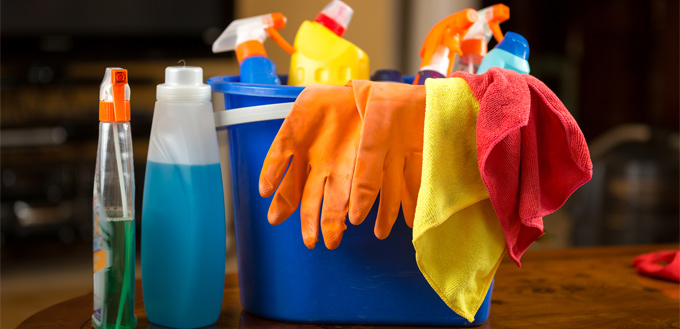
Antifreeze is especially dangerous during the cold season because it might leak or spill on the ground in puddles, which dog can lick. Other household chemicals that contain hazardous chemicals such as glow sticks and liquid potpourri can be harmful too. All these items out to be kept out of reach. When you clean surfaces, let them dry first before you allow your dog to enter the room. This is because dogs lick anything that is on their paws.
5. Giving Your Dog Rawhide Chews
Although rawhide chews are favorite dog treats, they are not safe. You might have been told that rawhide chews are right for your dog, but the drawbacks are severe, and there are healthy alternatives.
How are rawhide dog treats made?
They come from the inner core of a horse or cowhide. During their manufacture, the hides are collected, cleaned and ground or cut. They are then pressed into compact pieces that are used as dog treats. Some manufacturers combine the rawhide with liver, chicken or beef flavorings to make it more appealing to dogs.
What are the benefits of rawhide?
It is a dog’s instinct to chew, and rawhides provide precisely that. Chewing makes the dog’s jaws strong, their breath fresh and their teeth clean.
What risks are the risks associated with rawhide dog treats?
- Digestive irritation: some dogs are allergic or sensitive to rawhide and other components included during their manufacture. This could cause digestive issues such as diarrhea.
- Contamination: just like with pet toys, rawhide chews sometimes contain a small number of toxic substances. It might also carry bacteria like E. coli and Salmonella, just like in the case of human food.
- Choking: if your pet swallows a massive chunk of rawhide, it might get stuck in the esophagus and other regions of the digestive system. Depending on its location and size, a vet might manage to remove the pieces easily via the throat. However, in severe cases, abdominal surgery is needed.
What are the alternatives to rawhide dog treats?
- Bully sticks: Although they are costlier than rawhide, they are a safe option for your dog. The only disadvantage is their smell, but one can certainly cope.
- Carrots: Even though they lack the lasting power to satisfy your dog, they are a healthy snack, especially for overweight dogs. Make sure you buy the full-size ones as the small carrots can pose as choking hazards.
- Raw bones: avoid the cooked bones since they might cause digestive havoc for your pet. Supervise them when they are eating the bones so that you stop them in case they attempt to chew the large pieces.
You May Also Like: Bully Sticks for Dogs and Dog Bones
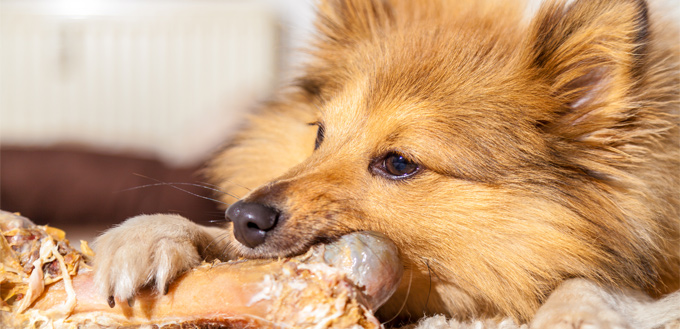
6. Failure to Vaccinate
Vaccinations prevent dogs from contracting various illnesses. Although dog diseases are now rare, you still need to take your dog to the vet for vaccination. Vaccines are most efficient when every member of a population has them.
Which vaccines should your dog receive?
- Core vaccines are crucial to all dogs. They include distemper, rabies, parvovirus and canine hepatitis.
- Non-core vaccines are given as per the dog’s risk of exposure. They include Bordetella bronchiseptica, leptospira bacteria, and Borrelia burgdorferi.
How to determine the frequency and timing of the vaccines
- For puppies: As long as the mother has a healthy immune system, a puppy will receive the necessary antibodies from the mother while nursing. The first vaccine is given at 6 to 8 weeks after birth. The vet will administer a vaccine every 3 to 4 weeks. The final dose should be given at 16 weeks of age.
- Adult dogs: Depending on the risk of exposure and your residence, an adult dog can receive one vaccine every year. Other vaccines can be given after every three years or longer.
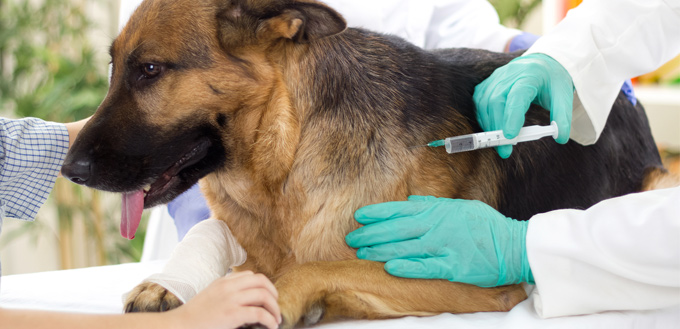
7. Relaxing on Tick and Flea Medicine
Some dog owners forget to administer tick and flea medicine. Most people assume that the extreme cold temperatures kill most pests, so they fail to follow the tick and flea routine medication during the cold season. It is essential to understand that an infestation can happen at any time of the year so you should remain vigilant.
- Tips to protect your family and pet from ticks and fleas
- Cover your sandboxes to avoid fecal contamination
- Wash your hands properly after contact with an animal
- Pick up dog waste from the yard frequently, especially in the places where pets and children play
- Take your dog to be frequently tested, at least once every year, to your vet
- Do not allow your kids to put dirt in their mouths
Check out our review of the Best Tick Repellent for Dogs.
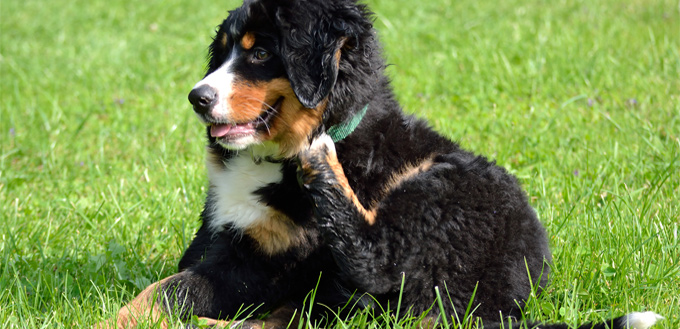
8. Not Picking Up Poop
Never assume that dog poop goes away because it doesn’t. Leaving poop around the compound and hoping it makes good fertilizer may seem like the best way out, but it might all come back to you. Not only does the poop spread harmful bacteria, but it attracts pests such as mice, which spread the bacteria further.
When you pick up poop, you will not just be doing justice to the environment, but also fairness to your dog. Poop can tell a lot about your pet’s health. Therefore, pet owners can monitor the dog’s waste over time and note any variations, because they could mean that the dog is unwell.
Find out more about Dog Poop Bags.
Dog feces are common carriers of these diseases:
- Corona
- Whipworms
- Roundworms
- Tapeworms
- Hookworms
- Giardiasis
- Campylobacteriosis
- Parvo
- Salmonellosis
You may also like our review of the Best Dewormers for Dogs.
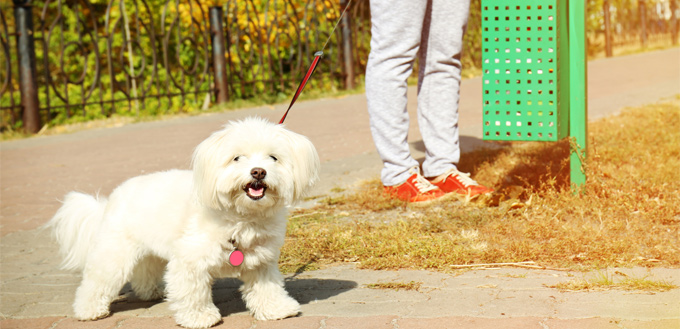
9. Leaving Them Under the Supervision of New People
If your dog is friendly, they are likely to be comfortable around new animals and people. This is not a bad thing, but it can turn out tragic if you do not know these people. When you leave your dog with a person they are not used to, it gives them a new experience and could make them anxious.
Children are unfamiliar with handling animals, and your dog might snap out of fear. As such, a well-behaved dog might start a fight. That is why dog owners are advised not to leave their pets unsupervised with strangers. Make sure you keep an eye on your dog when you are in public areas. All it takes is a moment of unsupervised stay for trouble to come up.
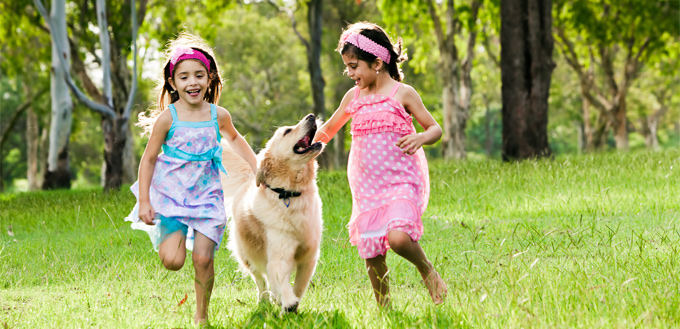
10. Giving Them Too Much People Food
If your dog is the curious type who likes eating stuff that is on the table and around the house, take caution because some human foods are toxic to dogs. Never leave these foods around your dog.
- Chocolate and caffeine
These products contain a chemical known as methylxanthines. When ingested by dogs, the chemical can cause hyperactivity, vomiting, panting, abnormal heart rhythm, seizures, excessive thirst, tremors and even death. Dark chocolate is more harmful than white chocolate.
- Alcohol
Under no circumstance should you give alcohol to your dog. When you give an alcoholic beverage to your dog, it might result in diarrhea, difficulty in breathing, coma, decreased coordination, tremors, central nervous system depression and in severe cases death.
- Raisins and grapes
Although it is not yet apparent which substances in grapes and raisins cause trouble to dogs, the fruits are a known hazard. They might cause kidney failure.
- Avocado
It might cause swellings in the head and neck region.
- Milk and dairy
Dogs do not have considerable amounts of lactase, which is the enzyme that digests the lactose in milk and other dairy-based foods.
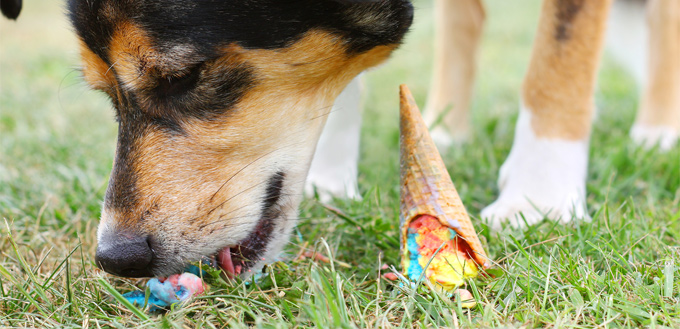
Therefore, taking milk can make them have a digestive upset or diarrhea.
- Chives, garlic, and onions
These herbs and vegetables might cause gastrointestinal irritation and may damage the red blood cells. Dogs are usually at risks when they consume large amounts of these.
Other human foods that are harmful to dogs include salt, peanut butter, fatty foods and chicken bones.
Sources:
- Jennifer Aldrich, 5 Common Dog-Walking Mistakes That Are Harmful for Your Pet, Better Homes and Gardens
- Pets in Vehicles, American Veterinary Medical Association
- Foods Your Dog Should Never Eat, WebMD






